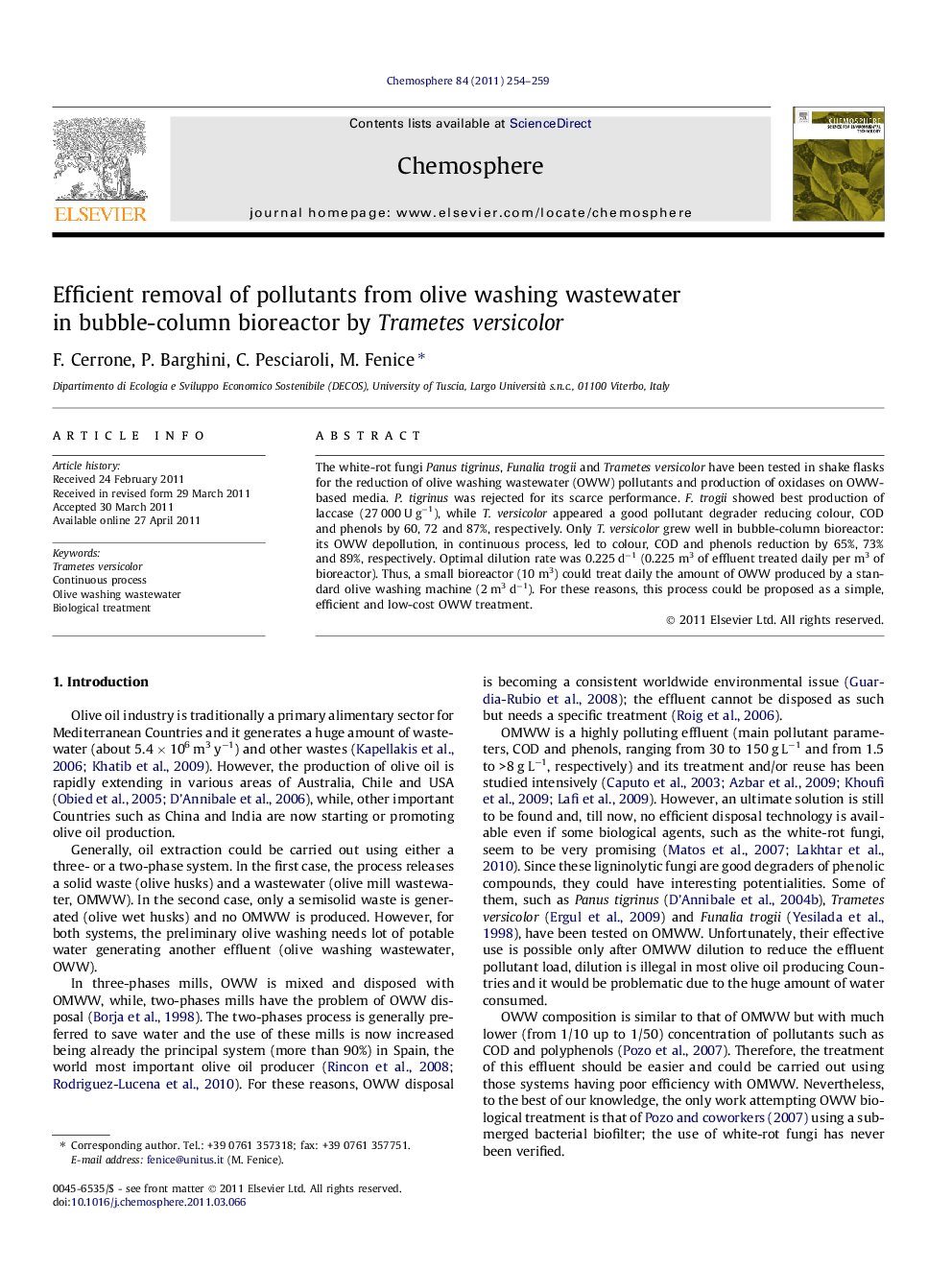| Article ID | Journal | Published Year | Pages | File Type |
|---|---|---|---|---|
| 4410674 | Chemosphere | 2011 | 6 Pages |
The white-rot fungi Panus tigrinus, Funalia trogii and Trametes versicolor have been tested in shake flasks for the reduction of olive washing wastewater (OWW) pollutants and production of oxidases on OWW-based media. P. tigrinus was rejected for its scarce performance. F. trogii showed best production of laccase (27 000 U g−1), while T. versicolor appeared a good pollutant degrader reducing colour, COD and phenols by 60, 72 and 87%, respectively. Only T. versicolor grew well in bubble-column bioreactor: its OWW depollution, in continuous process, led to colour, COD and phenols reduction by 65%, 73% and 89%, respectively. Optimal dilution rate was 0.225 d−1 (0.225 m3 of effluent treated daily per m3 of bioreactor). Thus, a small bioreactor (10 m3) could treat daily the amount of OWW produced by a standard olive washing machine (2 m3 d−1). For these reasons, this process could be proposed as a simple, efficient and low-cost OWW treatment.
► Trametes versicolor was selected for best pollutant degradation. ► Colour, COD and phenols were reduced by 65%, 73% and 89%, respectively. ► Optimal dilution rate for effluent treatment in continuous process was 0.225 d−1. ► A 10 m3 BCB may treat daily the amount of OWW produced by an olive washing machine. ► The process could be proposed as a feasible, efficient and low-cost OWW treatment.
